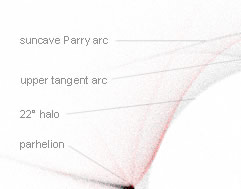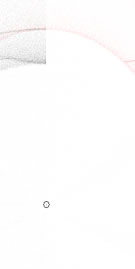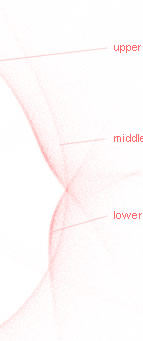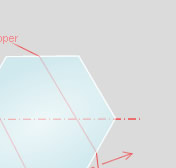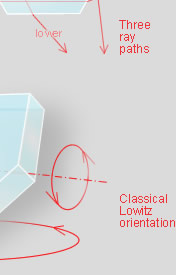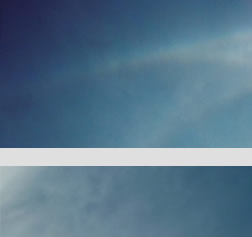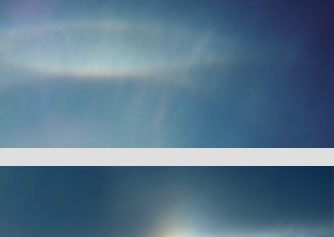|
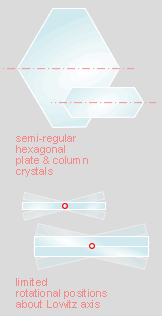
|
|
Lowitz arcs
were the most controversial of the halos. They were first
recorded in 1790, but even
until the 1990s their existence was doubted. Now, see the gallery,
digital cameras, easy Internet communication and much increased interest
in atmospheric optics combine to produce images each year. Nonetheless,
Lowitz arcs remain rare. When they are seen they are usually fleeting,
faint and indistinct.
Looking for a Lowitz arc? The traditional search is for arcs extending
from a sundog to the nearby 22° halo. Do this, but look out for
other features. The 22° halo at 10 and 2 o’clock is often
brighter where a Lowitz arc touches it. The 22° halo is conversely
rather weaker next to the parhelion. The upper Lowitz arc can be
most evident above the 22° halo.
Lowitz arcs are closely related to Parry arcs and the upper Lowitz
arc is always tangential to a suncave Parry. Therefore, look closely
at the region between a Parry arc and upper tangent arc. With luck,
a faint Lowitz arc will be seen curving downwards. When the sun is
low and the twin ‘V’s of an upper tangent and suncave Parry
are visible, look also for a middle Lowitz arc touching the Parry.
The classical explanation for Lowitz arc formation
is via Lowitz
oriented plate crystals. These ‘rotate’ or
take all rotational positions about a near horizontal ‘Lowitz
axis’. Lowitz rays pass
between two prism side faces inclined at 60°. As with Parry arcs,
there are three possible routes and for Lowitz oriented crystals they
produce upper, middle and lower arcs. The Lowitz orientation is unusual
and perhaps not aerodynamically very favourable. This might account
for the arcs’ rarity but there may be other factors.
Recently Marko Riikonen et.al.* analysed
several Lowitz displays with clear and well defined arcs and concluded
that, for some, the classical explanation was not adequate. The arc
relative intensities were better simulated using semi-regular hexagonal
plates or prisms rather than the regular ones previously assumed. Furthermore,
the observed extent of arcs suggest that crystals take limited orientations
about the Lowitz axis rather than all rotational positions. The Lowitz
story is not over yet.
* |
Riikonen,
M., Cowley, L., Schroeder, M., Pekkola, M, Öhman, T.
and Hinz, C.,
The Lowitz Arcs,
Weather, September 2007, Vol.62, No.9, pp252-6 |
|

